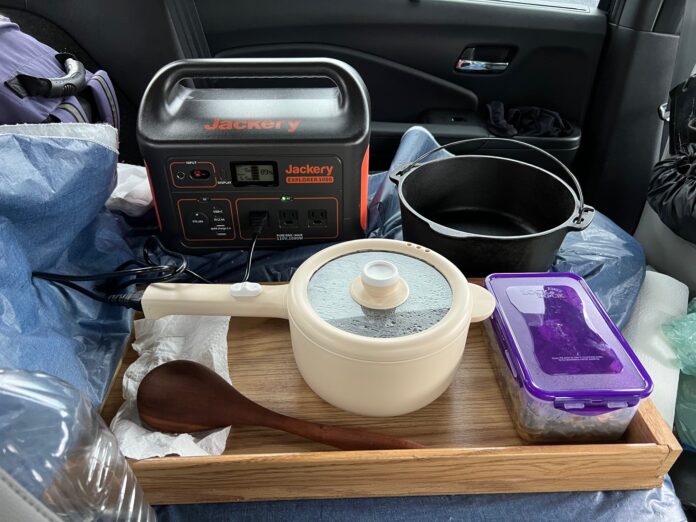
As you have heard from me before, when preparing for grid-down emergencies, having back-ups to your back-ups is essential for dealing with the unexpected. One thing many people don’t think about is—what if I am stuck in an enclosed space and cannot safely use any of the combustion cooking methods that I had planned for? The solution for that type of problem is having a charged-up portable electric power station and low-wattage hot pot on hand.
Preparing for Emergencies with a Power Station and Electric Pot
These “power stations”—rechargeable super-batteries, really—used to be prohibitively expensive. But with advancing technology, there are more choices than ever that won’t break the budget of a careful saver. It used to be that you would expect to pay about a dollar per watt-hour. This means a 500-watt unit would cost you around $500. But prices are coming down with new brands and higher wattages coming on the market.
My particular model is a Jackery 1000 from a few years ago. However, there are many other companies now with faster charging options and lower prices.
The other technological advances that work hand-in-glove with this are electric appliances with lower-wattage options marketed specifically for camping/RV-ing. Most common household appliances have a much higher power draw than you can get from a budget power station. So, the niche for lower-wattage options is there and being filled.
Electric Pot Options
If you have all day to heat/cook your meal, there are slow cooker “oven” options like RoadPro and HotLogic. They used to be mostly for truckers to use in the cigarette outlet of their vehicles. But there is a 12 volt outlet on most power stations, so the wider public is using them now as well.
However, if you need your food or water boiling within a few minutes there are low-wattage electric hotpots all over the internet now. Mine is a 2-quart Dezin, which I got from Amazon a couple of months ago. It has a low setting at 300 watts and a high setting at 600 watts, both of which are in the range for my 1000-watt power station. My model also came with a handy steamer basket.
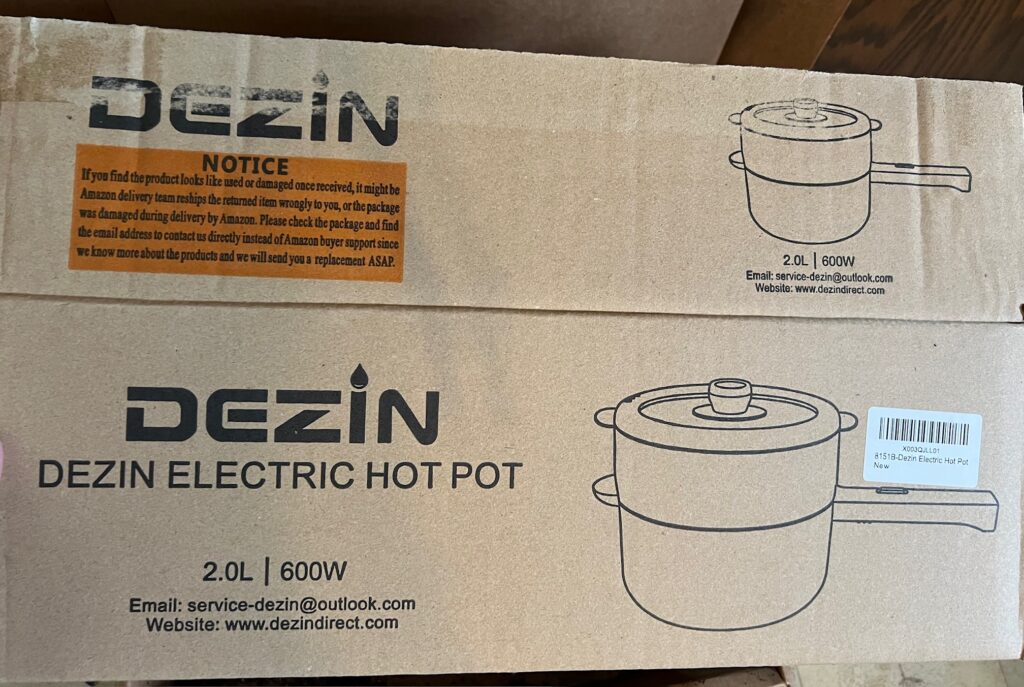
I tested this combo in my kitchen a month ago. To bring 2 quarts of water to a full rolling boil on the “high” setting took 18 minutes. I didn’t think that was bad at all.
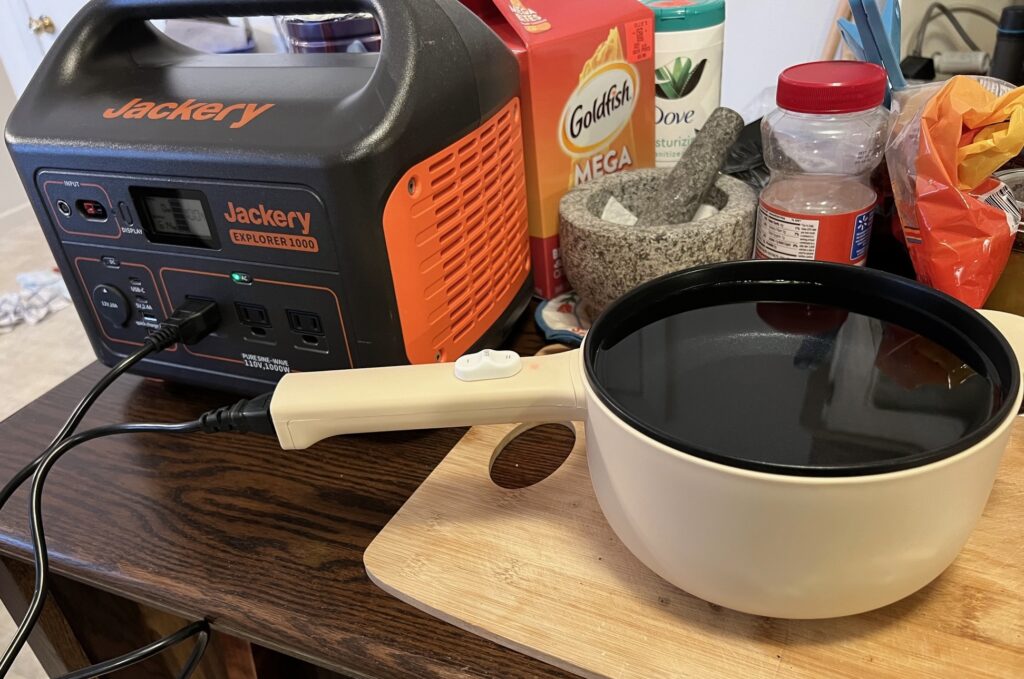
Now that I’ve given the background allow me to share my story of how this equipment saved me from wet misery on a recent weekend excursion.
The Story
Some of you may know that I am a history nerd, particularly about the 18th century. However, I have never had the time to do costuming, reenacting, or anything of that sort, before my retirement last year. Thus, after hand-sewing linen and wool all winter, I attended my first event last weekend. Since the event was close to home, I did not “encamp” as I didn’t have the proper equipment.
Nonetheless, attendees were asked to bring a period-appropriate covered dish to the “fort feast” on the first evening. No problem I thought, I’ll bring green beans and potatoes (from my dehydrated stash), prep ahead, refrigerate, and just reheat in cast iron over someone’s cook fire on the day.
Yeah, about that. Did I mention that there was periodic torrential rain, tornado watches, and a small stream flooding the first night and day? Weather like that is kind of hard on 18th-century campfires—and the cooks. There were hearths going inside the log buildings, but space and coals at those were at a premium, considering we were feeding over 100 people. So what did I do?
I hid in my car and used 21st-century technology!
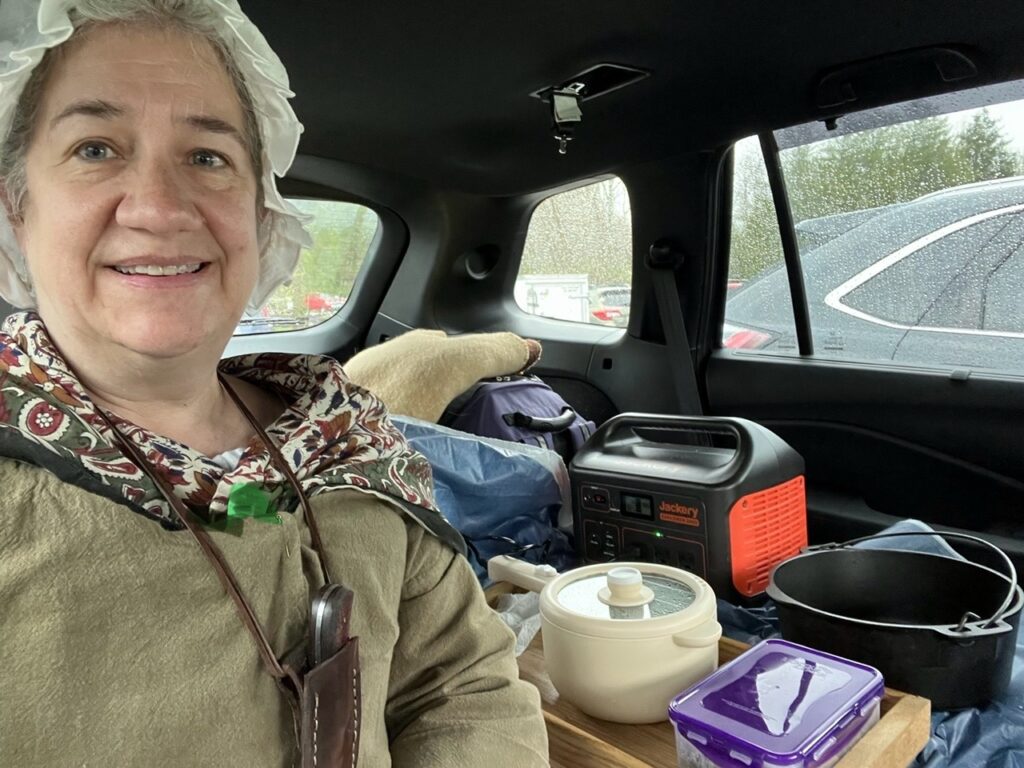
First, I boiled 2 quarts of water to dump into the lidded cast iron to heat it up. Similar to how the English pre-heated the teapot. Then, I boiled the refrigerated pre-cooked beans and taters in two runs (I had four quarts and only a 2-quart pot), dumped the water out of the hot Dutch oven, and filled it with veggies. I then, oh so innocently, sauntered from the parking lot to the fort in the drizzle with my kettle of hot veggies.
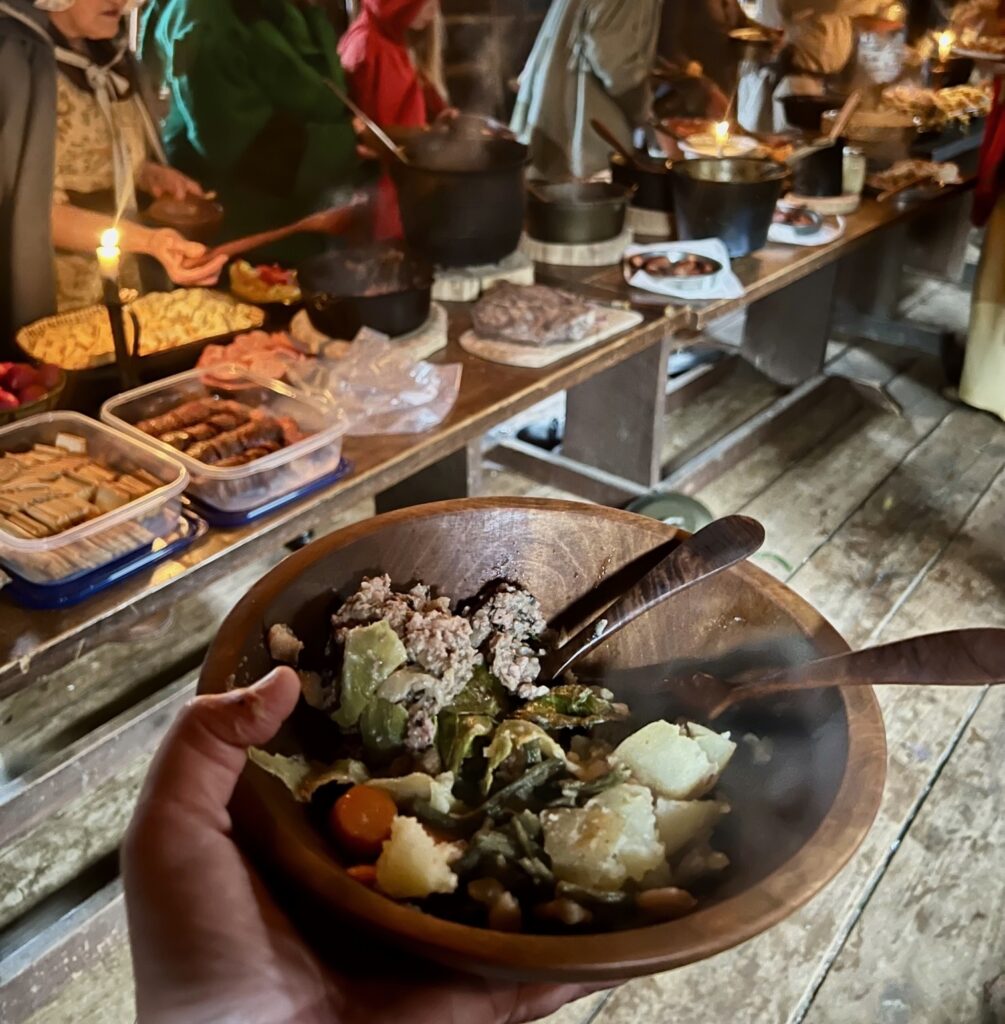
Final Thoughts
I know that in the interest of “living history,” I should have just suffered, but heck with that when I had another option. And that is exactly the point. This setup gives you options when fire, from whatever source, is not possible or safe. This works during a power outage at home, as well as during a downpour when camping with the kids.
I ran this 2-quart pot three times to get what I needed and still only used 35% of my available charge. If you were careful, you could probably feed your family for a couple of days on a single 1000-watt charge. Then, recharge the power station when the sun comes back out or while driving your car. This would work well for a car bug-out too as it wouldn’t produce any smoke.
The power station and hotpot option is undoubtedly the most expensive choice when planning for emergencies. But if you are an apartment dweller with an electric stove, other than a candle stove, it may be one of your only options for a grid-down emergency.
As for my experience, I have zero guilt. My daughter put it best, “Mom, if 18th-century people had that technology, they would totally have used it too!”



